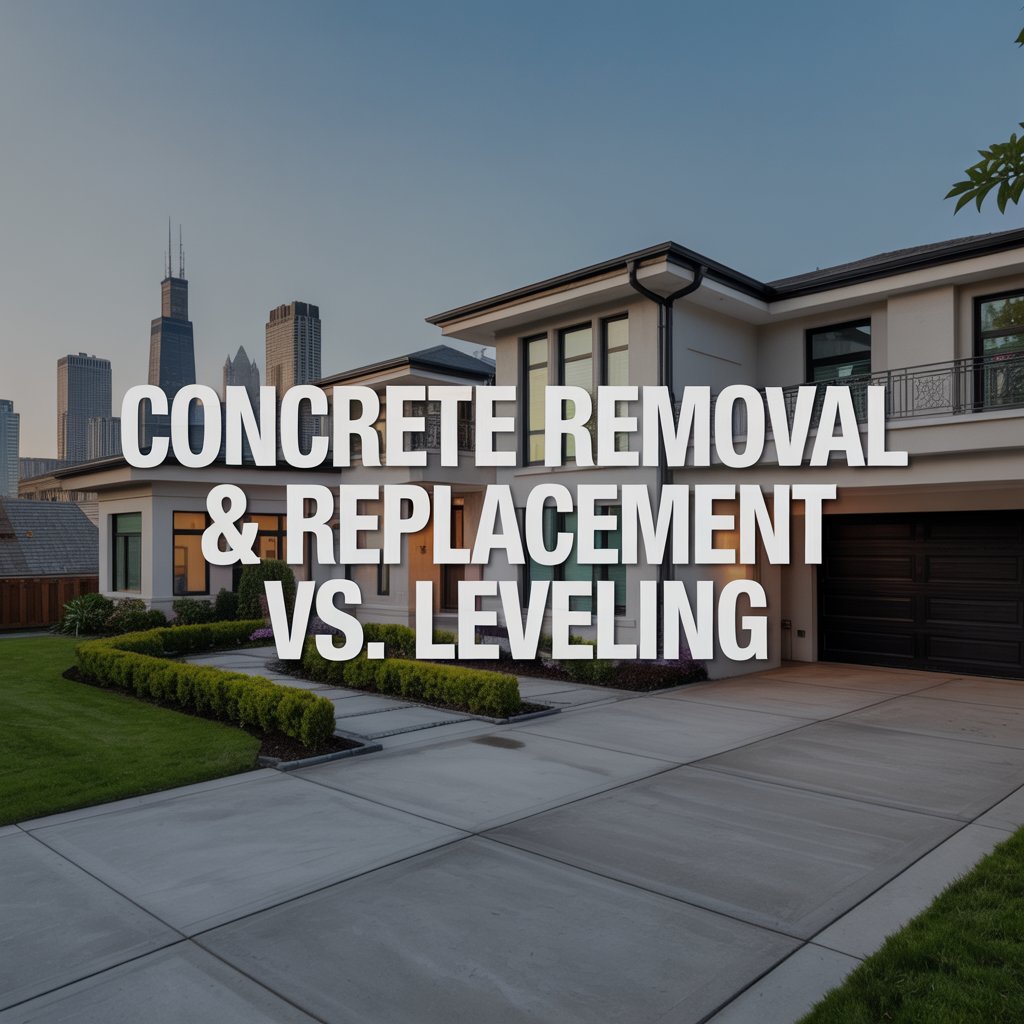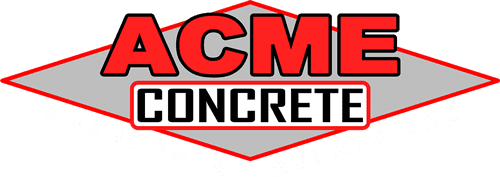
Homeowners in the Chicago suburbs often search “remove and replace” when concrete settles or cracks—but many slabs can be restored faster and for less with polyurethane leveling. This hub compares replacement vs. leveling across driveways, sidewalks, patios, porches/stoops, and garage floors.
Key Takeaways (Replacement VS Poly Q&A)
What’s the fastest way to eliminate uneven concrete in the Chicago suburbs?
Polyurethane concrete raising typically restores settled slabs the same day, with 15–30 minute cure time and minimal mess, while replacement requires demolition and a multi-day cure.
When is full concrete replacement truly necessary in Chicagoland?
Choose replacement for severely broken slabs, major design or drainage changes, or where code requirements demand new footings (e.g., some porches/stoops).
Does polyurethane leveling help with safety and code concerns?
Yes—leveling removes abrupt height changes that create trip hazards and helps restore uniform surfaces; final compliance depends on local inspection.
Does ACME pour new concrete?
No. ACME specializes in polyurethane lifting and stabilization; if replacement is the better path, they’ll say so during your estimate.
Concrete Removal & Replacement vs. Leveling: Chicago Homeowner’s Hub
Every concrete area has a job to do—keep cars rolling smoothly, keep porches safe, shed water away from the house, and provide trip-free sidewalks. When settlement shows up, you’re weighing two paths:
Replacement (demo + new pour): You get fresh concrete and can change design, thickness, or slope. Expect permits in many towns, more noise/dust, and downtime while new concrete cures.
Polyurethane leveling (repair what you own): Crews inject high-density foam through small, discreet holes to fill voids and gently lift slabs. It’s clean, precise, and typically ready to use the same day.
Quick decision guide by area
Driveways: Level if panels are intact but dipped near the garage, apron, or sidewalk; replace if slabs are shattered or you’re re-grading the whole approach.
Sidewalks/trip hazards: Level to remove offsets at joints; replace only if panels are crumbling, missing, or root heave makes alignment impossible.
Patios: Level to correct low corners or ponding; replace when most panels are broken or you’re redesigning slopes, borders, or drainage.
Porches/stoops: Level if the stoop is sound but settled vertically; replace if it slid away from the house, is severely fractured, or needs new frost-depth footings.
Garage floors: Level to restore slope to the overhead door or drain if the slab is sound; replace if heave, major cracking, or a full re-slope is required.
Why slabs sink—and why that matters for your fix
Most problems begin below the surface: soft or washed-out base soils, downspout discharge, or freeze–thaw cycles. Polyurethane addresses the cause by filling voids and stabilizing support beneath the slab. For a plain-English explainer, see Why Concrete Sinks. To understand the precision lift process end-to-end, review the Smart Lift System. And if you’re comparing quotes, ACME’s best-value assurance is outlined here: Get The Best Overall Value Guaranteed with Estimate Guard!.
What to expect on project day (leveling)
Technicians map lift points, drill small injection holes, and inject foam in controlled stages to raise only what needs raising. Entryways and paths remain tidy, and areas typically return to service within minutes of the last injection. Many projects include optional crack/joint sealing to keep water out of the base.
Warranty and peace of mind
ACME backs residential polyurethane lifting with a 10-year warranty designed for real-world protection—not fine-print loopholes. If a warranted area re-settles, ACME will re-raise it during the term.
Replacement VS Poly FAQ's
How do I know if my slab is a good candidate for leveling instead of replacement?
If the concrete is generally intact—no missing pieces, no severe buckling—leveling is likely. An estimator checks slope, pitch, elevation and drainage so the lift solves the problem rather than moving it elsewhere.
What if only one section is bad—can I mix leveling and selective replacement?
Yes. Repair projects can pair targeted leveling with limited panel replacement to keep costs down while delivering a uniform, long-lasting result.
Will leveling fix standing water on patios or driveways?
Often. Precise lifts can re-establish slope so water sheds to the street or yard. If the overall grade is wrong or the surface is severely damaged, a redesign or new pour may be smarter.
Is polyurethane safe and durable in Chicago’s climate?
The foam is inert, hydrophobic, and stable—it won’t wash out and performs well through freeze–thaw cycles. After a lift, sealing joints and improving runoff helps prevent a repeat issue.
How does the warranty work?
ACME’s residential polyurethane lifting includes a 10-year warranty. Coverage focuses on what matters: if a warranted area re-settles, ACME re-raises it. (Standard exceptions like Acts of God apply.)
ACME is Chicagoland’s polyurethane lifting specialist—focused on fast, clean, durable solutions that save sound concrete and minimize disruption. Our Smart Lift System® combines precision control with a 10-year residential warranty, and Estimate Guard keeps your project on the best-value path. Talk to a team that will tell you plainly when to replace—and show you exactly when a lift is the better call.
